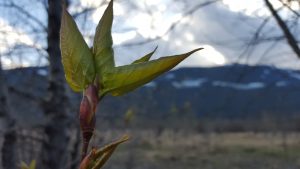 The very puzzling thing that happens when you are a child is that adults often ask what you want to be when you grow up. It’s a question that carries a certain weight except that when you’re little you peep out an answer that is both cute and easily forgotten.
The very puzzling thing that happens when you are a child is that adults often ask what you want to be when you grow up. It’s a question that carries a certain weight except that when you’re little you peep out an answer that is both cute and easily forgotten.
Not so when you hit say grade 6 or so. The answer ties you to a commitment towards making it happen. Or, at the very least, make you accountable for how you shape your studying towards making it happen one day. As you get older the question carries more and more weight. And the weight rests on your young and primed-for-flying-unencumbered shoulders.
I remember saying for a while that I wanted to be a veterinarian (I did have a penchant for taking care of every hurt animal and bird I could find and I still do whenever the situation arises). I was told by my Dad that being a vet was often less glamorous than it seemed at first sight. He was right and while he was not trying to deter me, he also held an accurate image so I can see and decide.
I then leaned towards wanting to become a chemist (I was told pure science is not as practical as food chemistry for example which carried little attraction to me at that point). I moved to musing about wanting to become a writer at which point I was told that I will starve to death. Hardly something to aim for.
In the end, I chose biochemistry and later writing found me anyway or I found it so I guess the path took me to a place I was trying to picture as a child but did not quite managed to put my finger on it.
To be fair, my parents never pushed towards any of the things I chose to study, nor did they advise against my free will to study this or that. They let me be, they listened when I shared my learning pursuits and for that I am forever grateful.
Nowadays I am often witness to hearing the ‘what you want to be’ question directed at my boys. The older they get the more reluctant they are to give away details. I can understand that. When I get asked about the paths I envision my boys would follow in their professional lives (it sounds a bit dry doesn’t it?) I shrug and say that is not for me to decide or push onto them in any way.
 All I ask of them is to grow up to be good people. Respectful and carrying compassion for fellow humans, animals and the environment, curious enough to keep on learning and most of all joyous. Whatever path they choose, they should be able to wake up with joy and excitement. That is what comes from adding layers of learning as you go. And most of all that is what happens when the world inside is one that has relevance to who you are. So, you listen and courageously follow the path you feel attracted towards. Profession? Who knows. Things evolve as we do. We grow and open our eyes and then we close them just so we can see lights flickering in the distance. We get inspired by reading, by connecting to people we meet along the way and by seeing places.
All I ask of them is to grow up to be good people. Respectful and carrying compassion for fellow humans, animals and the environment, curious enough to keep on learning and most of all joyous. Whatever path they choose, they should be able to wake up with joy and excitement. That is what comes from adding layers of learning as you go. And most of all that is what happens when the world inside is one that has relevance to who you are. So, you listen and courageously follow the path you feel attracted towards. Profession? Who knows. Things evolve as we do. We grow and open our eyes and then we close them just so we can see lights flickering in the distance. We get inspired by reading, by connecting to people we meet along the way and by seeing places.
There is no telling, that’s how much I know. There are no categories of careers we should attempt to push or influence our kids towards. We can have an open, non-judgmental dialogue, a listening ear sharp enough to catch whispers but coupled to a mind that can let go instead of holding the child accountable. We can answer questions, guide, suggest and …listen some more.
One of the most wondrous things we can witness as our children grow is seeing them full of zest for learning more of whatever drives their curiosity and having them explode with enthusiasm as they talk about it. There are ideas sprouting out of that kind of rich environment; there are projects and dreams and maybe something that can become a job or even a lifelong career.
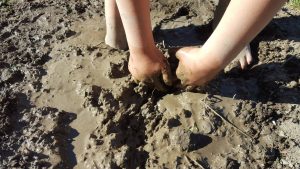 The point is… what matters is that they keep curious and willing to learn and they do so while being good people. Kind and open-minded and able to think for themselves, willing to accept failure and ready to keep on going even when hills become mountains and the top gets lost in thick fog.
The point is… what matters is that they keep curious and willing to learn and they do so while being good people. Kind and open-minded and able to think for themselves, willing to accept failure and ready to keep on going even when hills become mountains and the top gets lost in thick fog.
It’s what learning does to kids when they can follow it using minds and hearts combined. Things fall into place I dare say.

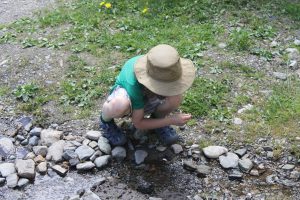 It’s been a while since we made the decision to learn at home. Those were the times when my answer to people’s question about which school my boys go to was a somewhat unsure ‘They are homeschooled’. It’s been more than two years now and I am still learning about what homeschooling means, yet my reply comes firm and sure of itself: My sons are homeschooled.
It’s been a while since we made the decision to learn at home. Those were the times when my answer to people’s question about which school my boys go to was a somewhat unsure ‘They are homeschooled’. It’s been more than two years now and I am still learning about what homeschooling means, yet my reply comes firm and sure of itself: My sons are homeschooled.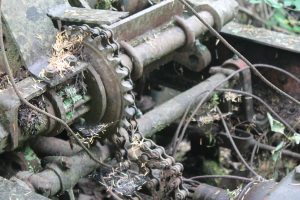 Which takes me to the very concept: learning. It’s as complex as the world itself because that is what learning is. Can you pinpoint where it starts? Not a chance. But somewhere in there are those first long walks with a wee toddler whose curiosity defies any sense of time. Leaves on a windy day fluttering, drops of water falling from the sky. Why? How? A snail pulls its body inside its shell when you as much as get your finger close to its dot-like eyes. Why? How?
Which takes me to the very concept: learning. It’s as complex as the world itself because that is what learning is. Can you pinpoint where it starts? Not a chance. But somewhere in there are those first long walks with a wee toddler whose curiosity defies any sense of time. Leaves on a windy day fluttering, drops of water falling from the sky. Why? How? A snail pulls its body inside its shell when you as much as get your finger close to its dot-like eyes. Why? How?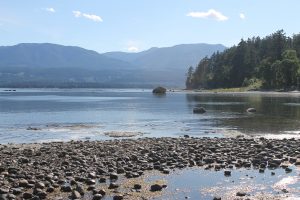 Biology, geography, math, physics, chemistry, history, and everything branching into specialized subtopics, which then branch some more and become even more specialized… that is the world around us. Each subject adds clarity to the big mystery that is life in all its shapes and forms. We know that bees make complex mathematical deductions to remember trajectories, and communicate to each other in ways humans have yet to understand. A bee is not just a bee. Children have the right to learn that. We owe it to them and to their curious minds.
Biology, geography, math, physics, chemistry, history, and everything branching into specialized subtopics, which then branch some more and become even more specialized… that is the world around us. Each subject adds clarity to the big mystery that is life in all its shapes and forms. We know that bees make complex mathematical deductions to remember trajectories, and communicate to each other in ways humans have yet to understand. A bee is not just a bee. Children have the right to learn that. We owe it to them and to their curious minds.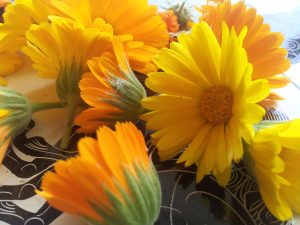 Learning makes sense when subjects are not cut into separate slices or ripped apart like petals of a flower. It’s the whole picture with all the subjects included and connected that makes learning fun and exciting and long-lasting. It’s not about memorizing, but understanding. Memorizing happens without effort when things make sense. That invites humbleness in. Joy too. There is so much to know, those who learn constantly will say. Children do. If only we let them and provide them with free thinking space that encourage learning.
Learning makes sense when subjects are not cut into separate slices or ripped apart like petals of a flower. It’s the whole picture with all the subjects included and connected that makes learning fun and exciting and long-lasting. It’s not about memorizing, but understanding. Memorizing happens without effort when things make sense. That invites humbleness in. Joy too. There is so much to know, those who learn constantly will say. Children do. If only we let them and provide them with free thinking space that encourage learning.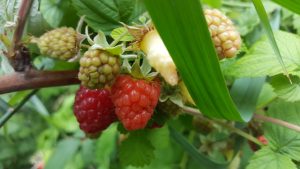 The reasons why they would learn and understand the multi-faceted process that is food preservation go beyond the rather simplistic ‘because it’s cool to have a homemade jar of jam or…(fill in the blanks)’. In our little school, we are shooting for the big picture. The bird’s eye view if you will.
The reasons why they would learn and understand the multi-faceted process that is food preservation go beyond the rather simplistic ‘because it’s cool to have a homemade jar of jam or…(fill in the blanks)’. In our little school, we are shooting for the big picture. The bird’s eye view if you will.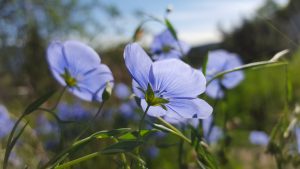 What goes into growing food? Hard work, enriching the soil using natural methods (compost and manure), more hard work and plenty of fresh water, plus a community to sell it to or people to share it with. Conventionally grown food often comes with chemicals many of which can have effects on the brain, endocrine system and they can also increase the risk of allergies and chemical sensitivities. It also comes with a variable-size carbon footprint, depending where it is shipped from. Possibly some low-paid workers in there too. Another level of unaffordability you could say.
What goes into growing food? Hard work, enriching the soil using natural methods (compost and manure), more hard work and plenty of fresh water, plus a community to sell it to or people to share it with. Conventionally grown food often comes with chemicals many of which can have effects on the brain, endocrine system and they can also increase the risk of allergies and chemical sensitivities. It also comes with a variable-size carbon footprint, depending where it is shipped from. Possibly some low-paid workers in there too. Another level of unaffordability you could say. Here we are. A new page of the new blog that will follow our homeschooling adventure. The start day was supposed to be last month as the new school year debuted. Well, it’s this month instead.
Here we are. A new page of the new blog that will follow our homeschooling adventure. The start day was supposed to be last month as the new school year debuted. Well, it’s this month instead.